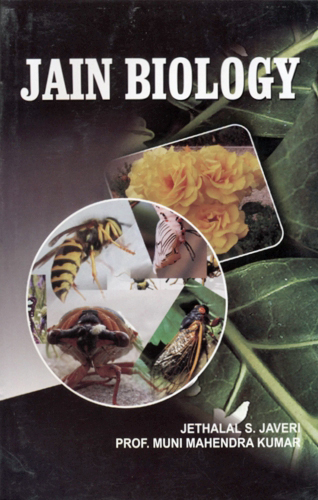In the animal kingdom, the mobile organisms—trasakāya—comprise of organisms with two to five sense organs. This is the animal kingdom of Biology. The entire kingdom Animalia, beginning with unicellular amoeba and ending with the humans, covering 10 phyla are but the terrestrial fauna from the trasakaya of Jains who add denizens of the hell and the heaven also to this category.
According to Biology, a large majority are non-chordates. Out of the ten phyla—major groups—only one is of chordates which are distinguished from the non-chordates by the presence of a stiff rod of cells called the notochord below the tubular nerve and above the alimentary canal. In higher animals this notochord gets replaced by the development of a vertebral column—spine or backbone—qualifying the animnals to be called vertebrates. Here again out of the four subphyla of the phylum CHORDATA only in one, the animals are classified as vertebrata. Non-chordata along with the primitive chodates, which do not possess the vertebral column are called invertebrates. Thus, this single structural feature appears to be basic in the system of classification of animals in Biology.
There are significant differences in the treatment of higher animals in Biology and scriptures. As we have seen, in scriptures higher animals are those who possess all the five sense-organs and the brain. Obviously these are what Biology classifies as vertebrates.
Now if we study the chart of PHYLUM CHORDATA, we find that the animals of the three out of the four sub-phyla are invertebrate marine animals such as sea-squirts etc. These are not 'fishes' which are vertebrates, i.e., animals with five sense organs and brain (saṃjñī pañcendriya), but animals with three or four sense organs only. Only the vertebrates are with five sense-organs.
Sub-phylum vertebrata is divided into five classes:
(a) fishes; (b) amphibians; (c) reptiles; (d) birds; (e) mammalia.
Comparing this with the scriptural contents, we find that they are treated under five-sensed organisms as follows;
In Prajñāpāna Sūtra from 28 to 41 sutras;
In Uttrādhyayana Sūtra, verses 171 to 193;
In Sūtrakṛtāṅga Sūtra in paras 77 to 81
In all of them they are divided into three classes;
Aquatic animals (jalacara); terrestrial—lan-based—animals (sthalacara) and aerial animals—birds—(khecara)
Aquatic animals are sub-divided into fishes, tortoises, crocodiles, whales and porpoises etc. Thus turtles, tortoises and crocodiles are grouped together with fishes as aquatic animals instead of as reptiles in Biology. Similarly whales are not fishes but mammals. Reptiles, which are again divided into lizards (with short limbs) and snakes (without limbs), are grouped with quadrupeds as two kinds or land-based animals. Rats and mongooses are grouped with lizards. Quadrupeds are sub-divided into four kinds, on the basis of the morphology of their feet (hoof and claw). Then the winged animals are divided into four kinds on the basis of the morphology of their wings. The first kind includes all the familiar and unfamiliar feathered birds; the second kind refers to animals like bats who have membranous wings. The third type have wings like a box which do not open and are useless for flying. No examples are given, but if what is implied is flightless birds, than ostrich and kiwi belong to this type. We also come across a GENUS of extinct gigantic flightless birds - Aepyornis—resembling Moas (flightless birds like ostrich) and known from their remains found in Madagascar. The last type is quite intriguing but it is explained that this kind is not found on the Earth.
This manner of classification differs from the five classes of the sub-phylum vertebrata as mentioned above. Here the fishes, amphibians and reptiles are described as cold-blooded (Piokilothermal) animals, i.e., their body temperature cannot be maintained at a fixed norm but varies with the surrounding atmospheric changes. Birds and mammals are warm blooded (Homoiothermal) vertebrates, i.e., their body temperature is maintained at a fixed norm irrespective of the changes in the atmospheric temperature.
Fishes are either cartilaginous or bony. Amphibians are those animals, like frogs and toads, which live equally well in water as well as on land. Reptiles include turtles, tortoises, lizards, snakes and crocodiles. Birds include arboreal—living in trees—as well as aquatic birds like ducks.
The fifth class of vertebrates are mammals which form the highest group of animals in the animal kingdom. They are so called because they possess, among many other glands, the mammary glands in females, which secrete milk for nourishing the young. Rabbits, rats, bate, squirrels, guinea pigs, monkeys, apes, and men are mammals.
In Biology, we do not find any sub-division of humans. But in scriptures, men are sub-divided on the basis of their geographical habitat which is also very peculiar and cannot be compared with any thing in Biology.
Understandably there is no mention of the denizens of hell or heaven in Biology. Scriptures, on the other hand, give much detailed description of these two ultraterrestrial beings which are already given earlier. We do not think it necessary to elaborate on them in this section.
 Jethalal S. Zaveri
Jethalal S. Zaveri
 Prof. Muni Mahendra Kumar
Prof. Muni Mahendra Kumar

